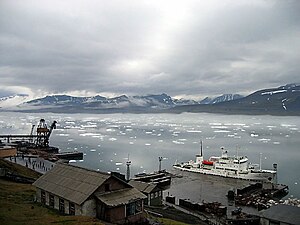
The Kara Sea is a marginal sea, separated from the Barents Sea to the west by the Kara Strait and Novaya Zemlya, and from the Laptev Sea to the east by the Severnaya Zemlya archipelago. Ultimately the Kara, Barents and Laptev Seas are all extensions of the Arctic Ocean north of Siberia.

RV Polarstern is a German research icebreaker of the Alfred Wegener Institute for Polar and Marine Research (AWI) in Bremerhaven, Germany. Polarstern was built by Howaldtswerke-Deutsche Werft in Kiel and Nobiskrug in Rendsburg, was commissioned in 1982, and is mainly used for research in the Arctic and Antarctica. The ship has a length of 118 metres and is a double-hulled icebreaker. She is operational at temperatures as low as −50 °C (−58 °F). Polarstern can break through ice 1.5 m thick at a speed of 5 knots. Thicker ice of up to 3 m (9.8 ft) can be broken by ramming.

The Northeast Passage is the shipping route between the Atlantic and Pacific Oceans, along the Arctic coasts of Norway and Russia. The western route through the islands of Canada is accordingly called the Northwest Passage (NWP).

A nuclear-powered icebreaker is an icebreaker with an onboard nuclear power plant that produces power for the vessel's propulsion system. Although more expensive to operate, nuclear-powered icebreakers provide a number of advantages over their diesel-powered counterparts, especially along the Northern Sea Route where heavy power demand associated with icebreaking, limited refueling infrastructure along the Siberian coast, and endurance required make diesel-powered icebreaker operations challenging. As of 2023, Russia is the only country that builds and operates nuclear-powered icebreakers, having built a number of such vessels to aid shipping along the Northern Sea Route and Russian arctic outposts since the Soviet era.

Kapitan Dranitsyn is a Russian icebreaker, built in Finland for the former Soviet Union. Since October 1995 she has been used as a research vessel by AARI. She also offers excursions in the Arctic Ocean north of Russia.

USCGC Northwind (WAG/WAGB-282) was a Wind-class icebreaker, the second United States Coast Guard Cutter of her class to bear the name. She was built to replace USCGC Staten Island which was in Soviet lend-lease service.
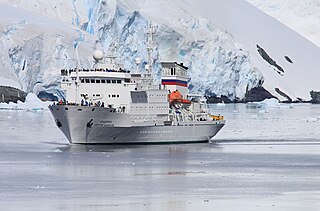
The Akademik Sergey Vavilov is a Russian research vessel, named after physicist Sergey Vavilov. She was completed on 12 February 1988, at the Hollming Yard in Rauma, Finland for the Soviet Union. Akademik Sergey Vavilov started operations as a research vessel of Shirshov Institute of Oceanology of the USSR Academy of Science in the USSR on 20 March 1989, and prior to 7 November 1999, completed five research cruises into Norwegian Sea, North Atlantic Ocean and South Atlantic Ocean.

Maria Vasilyevna Klenova was a Russian and Soviet marine geologist and one of the founders of Russian marine science and contributor to the first Soviet Antarctic atlas.
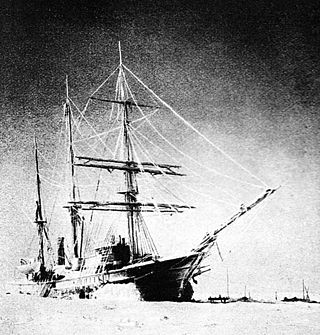
Zarya was a steam- and sail-powered brig used by the Russian Academy of Sciences for a polar exploration during 1900–1903.

MV Ortelius is an ice-strengthened vessel currently employed for expedition-style polar cruises by owner and operator Oceanwide Expeditions. She was originally named Marina Svetaeva and was built in Gdynia, Poland, in 1989 as a special-purpose vessel for the LLC RN-Sakhalinmorneftegaz.
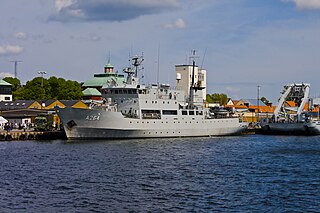
HSwMS Trossö (A264) is an auxiliary ship in the Swedish Navy. She was built in Finland for the Soviet Navy as an Akademik Shuleykin-class ice-strengthened patrol craft tender, launched in 1984 as Arnold Veymer and renamed Livonia in 1991. Her sister ships were Akademik Shuleykin, Akademik Gamburtsev, Professor Molchanov, Professor Multanovskiy, Geolog Dmitriy Nalivkin, Professor Polshkov, Professor Khromov and Akademik Shokalskiy.

Heritage Adventurer is an ice-strengthened expedition cruise ship built in 1991 by Rauma shipyard in Finland. She was originally named Society Adventurer, but after Discoverer Reederei was unable to take delivery of the vessel due to financial troubles, the completed ship was laid up at the shipyard for almost two years. In 1993, she was acquired by Hanseatic Tours and renamed Hanseatic. In 2018, she was chartered to One Ocean Expeditions and renamed RCGS Resolute through a partnership with the Royal Canadian Geographical Society. In 2021, she was acquired by Heritage Expeditions and, following an extensive refit, entered service in 2022 with her current name.
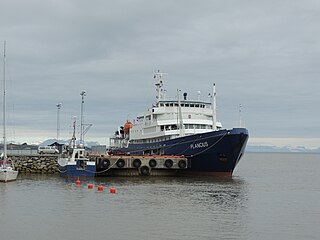
MV Plancius, formerly HNLMS Tydeman (A906), is a renovated oceanographic research vessel of the Royal Netherlands Navy now employed as a polar expedition cruise vessel by owner and operator Oceanwide Expeditions. She was commissioned into the Royal Netherlands Navy on 10 November 1976, and served until 2004, before being renovated for commercial use. The vessel was used for both military and civilian research and had a fracture zone named after it.

Nikolai Mikhailovich Knipovich was a Russian and Soviet ichthyologist, marine zoologist and oceanographer, notable as the founder of fisheries research in the Russian North.
Oceanwide Expeditions is a Dutch company specializing in expedition-style voyages to Antarctica and the Arctic. Deploying its own fleet of ice-strengthened vessels, Oceanwide emphasizes small-scale, flexible tours that provide passengers close contact with polar wildlife, landscapes, and historical sites. Tours usually take place in regions only accessible by sea, with little to no infrastructure. The locations visited are first reached by ship, after which expedition guides take small groups of passengers to landing sites by way of Zodiac Milpro RIBs, enabling safe cruising and maximum shore time.

SV Noorderlicht is a two-masted schooner built in 1910 as a light sailing vessel for the Imperial German Navy. Since the 1990s, she has served as one of the expedition cruise vessels for Oceanwide Expeditions, and from 2021 she is owned by Swan Expeditions, sailing to some of the most remote locations in the Arctic, particularly the archipelago of Svalbard.

NOAAS Researcher, was an American oceanographic research vessel in commission in the National Oceanic and Atmospheric Administration (NOAA) from 1970 to 1996. She had been delivered to the United States Coast and Geodetic Survey in 1970 as USC&GS Researcher, but did not enter commission until after her transfer to NOAA later that year. In 1988, Researcher was renamed NOAAS Malcolm Baldrige.

Perseus was the first Soviet research ship.
The Nikolai M. Knipovich Polar Research Institute of Marine Fisheries and Oceanography, its acronym being PINRO, is one of several research institutes of Russia subordinate to the Russian Federal Agency for Fisheries (Rosrybolovstvo). It is based in Murmansk. It is named for Nikolai Knipovich.

RV Kronprins Haakon is a Norwegian icebreaking polar research vessel owned by the Norwegian Polar Institute. The shiptime use is divided between the main users, the University of Tromsø (50%), Norwegian Polar Institute (30%) and Norwegian Institute of Marine Research (20%). She was built at Fincantieri shipyard in Genova, Italy, and delivered in 2018.
